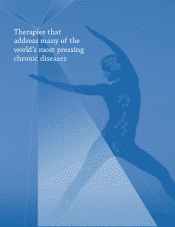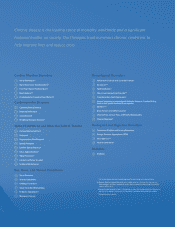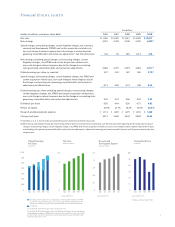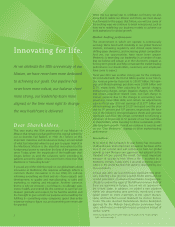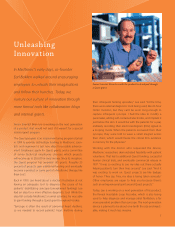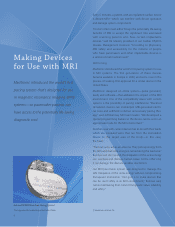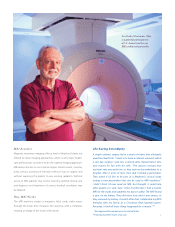Medtronic 2010 Annual Report Download - page 12
Download and view the complete annual report
Please find page 12 of the 2010 Medtronic annual report below. You can navigate through the pages in the report by either clicking on the pages listed below, or by using the keyword search tool below to find specific information within the annual report.
Collaborating
to Develop New
DBS Therapies
Medtronic was recently recognized by MIT
Technology Review as one of the 50 most
innovative companies for our continuing
leadership in developing deep brain
stimulation (DBS) therapy. The honor
should extend to the many physicians
who have collaborated with us from the
very beginning.
Prof. Alim-Louis Benabid (center) pioneered the use of deep brain stimulation to treat essential
tremor and Parkinson’s disease, then worked with a Medtronic team to make the therapy available
globally to qualified centers for appropriate patients. The team included Scientist Frans Gielen, Ph.D.,
(left) and Clinical Research Director Keith Mullett (right).
Veronique Fourmanior, a patient of
Prof. Benabid, found relief from Parkinson’s
disease symptoms with Medtronic Deep
Brain Stimulation (DBS) Therapy.
Physicians play a vital role in therapy and product inno-
vation. They provide the vision, insight, and deep clinical
understanding that can only come from those who pro-
vide medical care every day for people with debilitating
conditions.
The evolution of DBS therapy is a good example of collabo-
ration. From movement disorders like essential tremor,
Parkinson’s disease, and dystonia to psychiatric disorders
like obsessive-compulsive disorder (OCD) and depression,*
each new DBS appli cation is the result of physicians who
“connect the dots” between an existing and potential usage.
Physicians are able to do this because of their unique under-
standing of individual patients, neuroanatomy, physiology,
and unmet medical needs.
In the 1980s, Medtronic collaborated with French neuro-
surgeon Prof. Alim-Louis Benabid and neurologist Prof. Pierre
Pollack, who together pioneered the use of DBS to treat
essential tremor, a movement disorder that causes a rhythmic,
debili tating trembling of the hands, legs, or other body parts.
“At the time, neurosurgeons were treating essential tremor
by ablating a section of brain influencing the tremors,” said
Mark Rise, Ph.D., a Distinguished Scientist on the Medtronic
*Currently under clinical study.
8



